shutterfinger
Member


Its a #1 Graphex from 1939-1946 without flash sync. It came on a Miniature Speed Graphic lens board.
The main cocking spring and high speed springs only have surface rust and are quite strong.
The only mystery is was the name plate screw, a #0 or #1 3/32 inch long, stuck in the shutter blade path along the outer edge of the case the cause of the jam that resulted in bad storage and the rust or something that occurred afterwards. The bits of paper towel were definitely after, an attempt to get it going by wiping the shutter blades.
And yes I may sell it after I get it running, like new? I doubt I will do any filing on the speed ring.
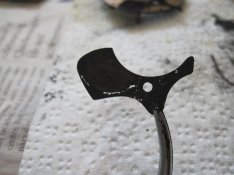
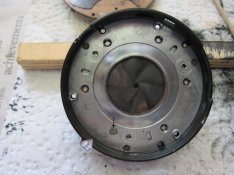
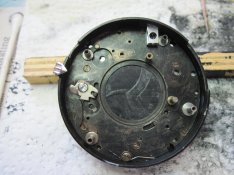
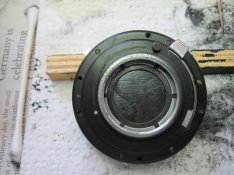
I use 1.5 power reading glasses for reading, a 2 power pair on over the 1.5 pair makes the small detail as visible as it was 45 years ago.admire your eyes

Not a dumb question. ( Dumb mistake using too small a pair of pliers which slipped off the spring 4 times prior to the near fatal to the shutter mishap.)why could not new shutter blades be cut from sheet film stock or similar?
Not a dumb question. ( Dumb mistake using too small a pair of pliers which slipped off the spring 4 times prior to the near fatal to the shutter mishap.)
The material that can be used to make a blade from depends on the shutter. This one uses .003 inch blued steel? on brass pivot pin. The blades only have .0015 inch clearance between the blade and the metal plates they are between. The blade controller turns in a 45° arc and has a post that fits into a hole in the blade while the pivot pin in the blade slides in a slot.
Some shutters use fixed pins on the blade controller and plates requiring only holes in the shutter blades. Some shutters have .010 inch to .020 inch clearance for the blade to operate in.
The thinnest film is Fuji color at .0035 inch in 120 format which may not be rigid enough for the length of the blade. The pivot pin is shouldered and is a press fit onto the blade so there is no way to get it off and remount it to a new blade easily and even more difficult to make a new pin without a lathe and press.
Several years ago I made 2 blades for a Wollensak Studio shutter from Portra sheet film as that is what I had on hand that was out of date and had severe color shift. I used 2 layers gluing them together emulsion to emulsion. It worked very well.
When doing repairs such as this it is best to remain close to original design/material thickness.
I'm not currently under any deadline requirements to get this one fixed.
I have a 3x4 RB Series B I'm in the process of making a new shutter curtain for also. I thought I could get this one fixed while the coating on the new material was curing.
I believe I'd throw that shutter in the parts box and put it out of my mind (as best as possible). Although I do not take the loss to this world of a photographic gadget easily; that will never be made again.
McMaster-Carr sells blued steel shim stock, very good for making shutter and aperture blades; it's kind of shiny so etching it and using a cold blue solution gives a nice dark matte surface. The pivot pins are not pressed in but riveted, the factory most likely had jigs and punches to do this rapidly and accurately, making one or two pins from hard brass stock and riveting them by hand with a hammer (small hammer - 3/4 oz. or so with a rounded polished face) is possible with practice - or get your local watchmaker to do it.
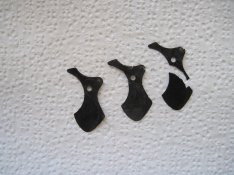
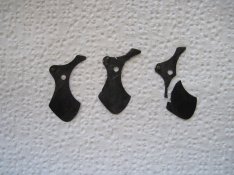
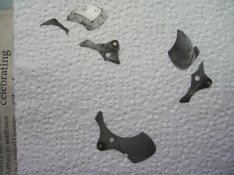
| Photrio.com contains affiliate links to products. We may receive a commission for purchases made through these links. To read our full affiliate disclosure statement please click Here. |
PHOTRIO PARTNERS EQUALLY FUNDING OUR COMMUNITY:  |